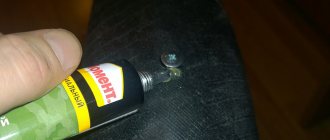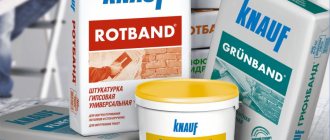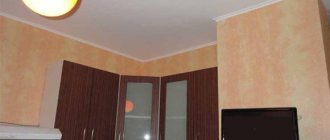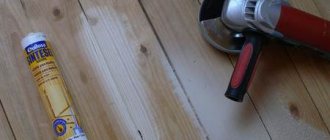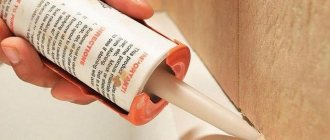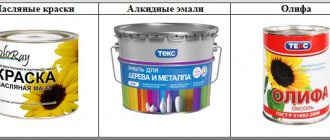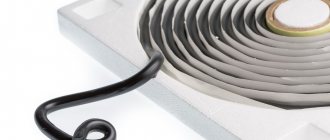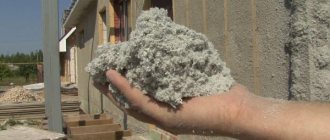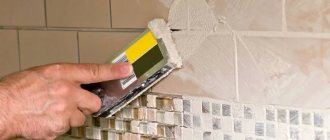Polyurethane sealant
is a viscous polymer substance that is produced on the basis of a synthetic elastomer. Sealants based on polyurethane and polymer components are new generation materials.
Their use can significantly improve the quality and reliability of waterproofing cracks, seams and the most vulnerable places on the roof: junctions, valleys, connections of individual sheets or covering elements and points of fastening of roofing materials.
Origin
In the first half of the 20th century, the question arose - “What can replace natural materials such as cork and rubber?” A cheap alternative was needed, a material whose production would use non-exhaustible resources.
The first experiments were carried out in the USA - they studied the synthesis of polyamides. The Germans went further than the Americans by synthesizing polyurethane elastomers by the interaction of diisocyanates and polyols.
As a result of numerous tests and experiments, elastic, semi-rigid, rigid and polyurethane foams were obtained. In the construction industry, elastic one-component polyurethanes (also known as sealants) and polyurethane foam have found the most widespread use.
In the European and American sealing markets, polyurethane sealants occupy a much larger share compared to silicone and thiokol-based materials.
Peculiarities
Most buyers choose polyurethane compounds because they have many positive qualities.
Let's take a look at some of them:
- Polyurethane sealant is characterized by increased elasticity. Often it reaches 100%. It is very easy to work with such a composition.
- Such mixtures boast excellent adhesion to many types of materials. They fit seamlessly onto concrete, brick, metal, wood and even glass. In addition, polyurethane-based sealants also have good self-adhesion.
- Such compositions are wear-resistant. They are not afraid of high levels of humidity or aggressive ultraviolet rays. Not every binding material can boast such characteristics.
- Guarantees excellent sealing and waterproofing of the necessary parts for quite a long time.
- Temperature changes are not scary. It can easily withstand exposure to sub-zero temperatures down to -60 degrees.
- Can be used at any time of the year. For example, it could be winter with cold ambient air. In such conditions, the sealant will still easily lie on one or another base, so repair work will not have to be postponed to a warmer period.
- Does not form smudges. Of course, this property occurs in cases where the applied layer does not exceed 1 cm in thickness.
- The composition gives minimal shrinkage after polymerization is completed.
- Polyurethane sealant is also convenient because it dries in the shortest possible time and hardens quite quickly.
- Environmental friendliness. These materials do not contain hazardous and harmful substances released under the influence of high temperatures. Thanks to this advantage, polyurethane sealants can be used without fear in furnishing residential premises - baths, kitchens.
- If the air contains moisture , then under its influence such a sealant will polymerize.
- Not subject to rust.
- Such materials are not afraid of mechanical damage.
When exposed to external influences, they quickly return to their previous shape.
It is worth noting that polyurethane-based sealant has many characteristics similar to polyurethane foam during its drying process, since it polymerizes in the shortest possible time and becomes hard.
Modern sealants contain a component such as polyurethane with a one-component structure. You can also find two-component versions in stores that boast improved sealing properties.
Flaws:
- Despite the fact that polyurethane sealants have excellent adhesion properties, in some cases they are not enough. A similar problem can be encountered if you seal structures made of certain types of plastics.
- According to experts and manufacturers , polyurethane compounds cannot be laid on substrates whose moisture level exceeds 10%. In this case, they should be “reinforced” with special primers, otherwise you simply will not be able to achieve sufficient adhesion.
- It was stated above that polyurethane compounds are not afraid of temperature changes. However, it is worth considering that prolonged exposure to temperatures of 120 degrees can lead to the sealant losing its performance.
- Few people know, but recycling polymerized sealant is an expensive and very complex operation.
Advantages and disadvantages
Polyurethane compounds are distinguished by a number of positive characteristics, the main one being their elastic property. Experts also highlight the following advantages:
- Adhesive to most substrates;
- Resistance to wear, mechanical stress, sunlight, water, chemicals;
- High level sealing and waterproofing properties;
- Does not cause rust on metal substrates;
- Withstand high temperature and low temperature exposure;
- Can be used in any season;
- No smudges appear during operation;
- Does not shrink;
- Fast drying rate;
- Durability.
Among the shortcomings are noted:
- Not all types can withstand temperatures above +100 degrees;
- When present in the composition of organic diluents, it produces toxicity; after drying, the harmfulness disappears;
- For a number of plastic types, adhesion is low;
- If the base has a moisture content of more than 10%, then the base needs to be primed.
Polyurethane compounds are distinguished by a number of positive characteristics, the main one being their elastic property.
Kinds
Thanks to the wide range, customers can choose the best sealant option for various conditions. Let us take a closer look at what types of such compositions exist today.
First of all, all polyurethane sealants should be divided into one-component and two-component.
One-component
This type of sealant is quite common. It is a substance that resembles a paste in consistency. It contains one component - a polyurethane prepolymer.
This adhesive-sealant boasts increased adhesion to most materials. It can be used even when working with capricious ceramic and glass bases. After laying the one-component composition on the joints, the stage of its polymerization begins.
This occurs due to exposure to moisture contained in the surrounding air.
According to experts and craftsmen, one-component sealants are recognized as one of the most convenient to use.
To obtain them, you do not need to combine different components, so the resulting quality of seams is always excellent. Similar compositions are used both for repair and construction work.
Most often they are chosen for sealing:
- various building structures;
- roof joints;
- automobile bodies;
- glass that is installed in cars.
Dissolution and dilution
Polyurethane adhesive sealant is difficult to remove after hardening, and construction work is often accompanied by spillage of funds onto unnecessary areas. Then, in order to remove the layer, it is necessary to apply dissolution using alkali-based compounds; you can also first remove the layer with a sharp object.
You can dilute the thick solution with an organic thinner; the optimal choice would be solvent 646. But the product must be introduced carefully so as not to disturb the properties of the sealant with an excessive amount.
You can dilute the thick solution with an organic thinner; the optimal choice is solvent 646.
Properties
Polyurethane sealants are distinguished by the fact that they have excellent strength characteristics and have a long service life.
They are not afraid of unfavorable environmental factors.
They perform well even under water, so such mixtures can be used in a variety of areas.
Polyurethane sealants adhere seamlessly to most known materials, for example:
- with brickwork;
- natural stone;
- concrete;
- ceramics;
- glass;
- tree.
When open cavities are filled with a similar composition, it forms a very neat layer resembling rubber. He is absolutely not afraid of negative external factors.
It is also worth paying attention to the fact that high-quality polyurethane sealant adheres 100% to certain substrates, regardless of their texture.
After drying, the sealant can be painted. As a result, it will not lose its useful qualities and will not undergo deformation.
Polyurethane sealant is a fairly economical material, especially when compared with different analogues. One package may well be enough to treat a considerable area.
For example, if you need to fill a joint that is 11 m long, 5 mm deep and 10 mm wide, then you will only need 0.5 liters of sealant (or 2 cartridges of 0.3 liters each).
As for the average material consumption with a seam width of 10 mm and a depth of 10 mm, it will be 1 tube (600 ml) per 6.2 linear meters.
Modern polyurethane sealants have a short drying time. However, we must not forget that this parameter is influenced by the density of the applied layer.
The polyurethane-based composition seamlessly adheres to other sealants. Thanks to this property, if the seal is damaged, the affected area can be easily repaired. As a result, the improvements will be almost invisible.
Polyurethane sealants are available in transparent and colored varieties. In stores you can find not only simple white, but also gray, black, red, yellow, blue, green and other colorful compositions.
How to use polyurethane sealant
PU sealant has a high rate of self-adhesion - there is no need to remove the old layer to distribute the new composition. In comparison, silicone compounds must be thoroughly cleaned to avoid cracking and chipping over time.
Two-component “Polyurethane sealant for sealing joints (2K)” produced by “Khimtrust” is suitable for surfaces made of concrete, foam concrete, metal, PVC, wood, plaster. Available in white and gray paste to choose from.
To increase the viscosity of the components before application, soak the materials for 24 hours in a heated room. Carry out work in gloves and overalls, avoid contact of the composition with the skin and surfaces of mucous membranes.
Before application, clean the substrate by hand or with a power tool. If necessary, degrease the surface from oily contaminants. Thoroughly mix the components to a homogeneous consistency using an electric drill with a power of 600–800 W. For accurate polymerization of seams, apply the material to the end surfaces without protrusion. Start applying the mixture, avoid getting water, foreign objects and the formation of air bubbles inside. Protect the surface from rain and precipitation for 10 days after application.
We tested the Khimtrast sealant for fluidity, adhesion, elongation at break, and operating temperature range. The material does not lose its physical and mechanical properties when stored in the freezer - you can use the material in the range from −60 °C to +70 °C. The time for complete curing of the Khimtrust sealant is 24 hours. Watch the video for the test process and results.
Consumption
Polyurethane sealants have many positive qualities, which include the cost-effectiveness of their use. Many consumers are wondering how to correctly calculate the consumption of such a composition.
Important input data in this case are the width, depth and length of the seam that needs to be sealed.
You can calculate how much polyurethane-based sealant you will need using the following simple formula: joint width (mm) x joint depth (mm). As a result, you will learn about the material requirement in ml per 1 linear meter of seam.
If you plan to form a triangular-shaped seam, then the resulting result must be divided by 2.
Rules for working with sealing compounds
To get a high-quality result, you need to remember the important rules for using the composition. You cannot change the amount of components when preparing the solution. Manual mixing of substances is not applicable; diluents should not be introduced. Only use sealant whose temperature is above +15 degrees.
You cannot change the amount of components when preparing the solution.
Application
Modern polyurethane sealants are used in various fields, as they are easy to work with.
Let's take a closer look at the cases in which you can't do without such adhesives:
- For indoor and outdoor work. It is often used for high-quality sealing of door and window openings.
- When installing a new window sill.
- If you need to seal the seams left between the panels, then polyurethane sealant is best suited.
- When sealing structures made of natural/artificial stone. For such work, polyurethane sealant is ideal.
- In case you need to process objects subject to slight vibration, where the filled seams may become deformed. That is why such products are used in the automotive industry. For example, they can be used to assemble and disassemble headlights and glass.
- For high-quality waterproofing of roofs , foundations and artificial reservoirs, since it does not lose its positive qualities upon contact with water.
- When assembling various pieces of furniture.
- When sealing seams and in cases where the structure is subject to constant temperature changes.
- When assembling wooden verandas of different sizes.
- When insulating metal pipes.
- To prevent corrosion.
Foam performance depending on the season - the choice of a specialist
A fairly important point is what season you needed polyurethane foam and how to use it.
For the summer season, the minimum air temperature for using a can must be plus 5 degrees, and the temperature of the can directly used must not be lower than plus 10.
The fact is that at very low temperatures, the period of time during which the sealant hardens increases, and various catalysts are added to speed it up.
If you risk using summer foam in winter, you will encounter crumbled material with glass bubbles. It will simply slide off the vertical surface and using it is like throwing your personal money down the drain. By the way, even all-season polyurethane foam has restrictions on its use - the air temperature should not be lower than minus 10 degrees, and the cylinder should not be lower than plus 5.
The hardened polyurethane mixture has a clearly formed internal structure - and if the cells themselves in the body of the foam are smaller, the better its mechanical properties will be, as well as much higher adhesion to building materials and resistance to moisture.
Manufacturers
Today, there are many manufacturers producing high-quality and reliable polyurethane-based sealants. Let's take a closer look at some of them.
"Moment"
This manufacturer is one of the largest and most famous. The company's product range is very rich. Moment offers not only sealants, but also adhesive tapes, different types of glue, chemical anchors, and tile products.
As for polyurethane sealants, among them it is worth highlighting the popular product “Moment Germent”, which forms a hard and elastic adhesive joint that is highly resistant to water, household chemicals, oils, petroleum products, acids and salts.
This popular product is used for insulating and gluing materials in construction and industry. It easily adheres to wood, baseboards and various decorative objects.
In addition, “Moment Germent” is used for gluing tiles and roof ridges.
"Izhora"
The production facility is located in St. Petersburg and offers consumers a choice of high-quality polyurethane-based adhesives.
Izhora produces both one- and two-component compounds that can be used for sealing joints on facades and plinths, when treating seams and cracks in floors, as well as for external treatment of door and window openings.
In addition, the company offers formulations in grey, blue, green, yellow, brick, pink and lilac colors.
Olin
This is a well-known French manufacturer producing high-quality polyurethane sealants. The brand’s assortment includes the popular compositions “Isoseal” P40 and P25, which easily apply to concrete, ceramics, glass, aluminum, steel and wood.
These polyurethane formulations are sold in 600 ml tubes and 300 ml cartridges. Olin polyurethane sealants are also available in a variety of colors: gray, beige, dark beige, dark gray, terracotta, orange, black and teak.
Retel Car
Retel Car is a popular Italian manufacturer that produces polyurethane joint sealants that do not drip and are perfect for treating vertical surfaces. They are used in automotive production, for sealing containers, and for laying air ducts and air conditioning systems.
Sikaflex
The Swiss company Sika produces a number of high-quality products based on polyurethane. Thus, Sikaflex sealants are multi-purpose - they are used for roofing work, when installing air conditioning systems, and also when filling deformations in concrete.
Sikaflex polyurethane sealants can also be used for gluing window sills, steps, baseboards, and various facing elements. They have excellent adhesion and adhere easily even to plastic.
Dap
This is a well-known brand from the USA that offers silicone, polymer and polyurethane sealants. The company's products are distinguished by affordable prices and good performance characteristics.
For example, the popular “Dap Kwik Seal” composition, which is ideal for sealing seams in the kitchen or bathroom, can cost from 177 to 199 rubles (depending on the volume).
Popular brands
It’s easier to choose a product if you know the popular brands. The following brands are popular and have proven themselves to produce high-quality formulations:
- "Moment-Germent";
- "Izhora";
- Olin;
- RetelCar;
- Sikaflex;
- Dap.
It’s easier to choose a product if you know the popular brands.
Polyurethane-based products for filling joints can be an excellent solution for construction. There are several types of compounds that are suitable for different operating conditions. When choosing, you should carefully study the instructions from the manufacturer.
Adviсe
- Roofing compounds cannot be used for interior work as they are toxic.
- Wear glasses and gloves when handling polyurethane sealants. If necessary, you should also wear a respirator.
- If after application you notice that the adhesive layer needs adjustment, then you have another 20 minutes left for this work while it dries.
- If you want to remove sealant from a particular surface, then you should dissolve it. Special types of solvents for such compositions can be found in many hardware stores.
Some consumers are wondering how to dilute such sealants to make them more liquid? There is no universal recipe here. Some people use white spirit for this, while others use gasoline.
Application methods
The material is sold on store shelves to the buyer in pre-packaged foil tubes with a capacity of 600 ml. In addition to tubes, you can also find smaller packaging of 310 ml in metallized container packaging. To apply the sealant, a special tool is required - a gun. You can apply sealant using the following types of guns:
- Mechanical gun - suitable for small volumes and used in private housing construction. It is impossible to perform a large volume of work with it; it is structurally designed for a small volume.
- Pneumatic gun - works using the energy of compressed air. With the help of an air gun you can perform large volumes of work, and it is also suitable for use by professional teams of installers and builders.
- Pistol with battery. Thanks to the power supply, the performance of this tool is greatly improved. This gun is widely used in the installation of building structures of high-rise buildings, in civil and industrial construction.

